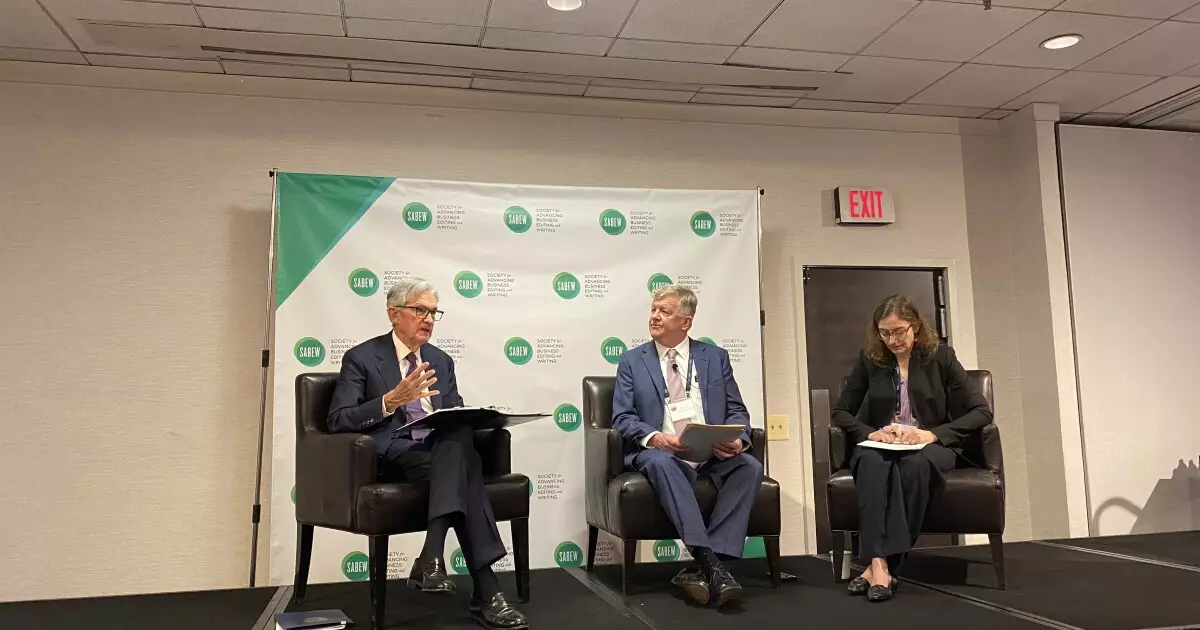The 7 Crucial Takeaways from Jerome Powell’s Recent Insights on Economic Prospects

In recent remarks, Federal Reserve Chair Jerome Powell highlighted a critical stance: the U.S. economy is in a state of flux, making it necessary for the Federal Reserve to adopt a wait-and-see approach regarding interest rates. This nuanced position recognizes the ripple effects that new tariffs, immigration policies, and government spending initiatives, implemented by the Trump administration, have on the broader financial landscape. The acknowledgment of uncertainty suggests that the Fed will rely on ongoing evaluations of incoming economic indicators before making any significant adjustments to monetary policy.
The reality is that economic conditions are rarely straightforward, and the multiple variables at play create a complex scenario for policymakers. Powell’s cautious stance emphasizes prudence; by taking time to assess the new economic landscape, the Fed aims to mitigate potential risks. This isn’t just about waiting; it is about ensuring that decisions are grounded in robust data rather than reactive impulses.
Employment: Boon or Burden?
Powell assured stakeholders that, by multiple metrics, the labor market remains “broadly in balance,” with payroll data showing promising growth. The fact that companies added an average of 150,000 jobs monthly is undoubtedly encouraging, suggesting that the economy continues to produce jobs amid uncertainty. However, the underlying question remains: What happens when tariffs and immigration changes take effect?
There’s a growing concern that the labor market, buoyed by these gains, is not insulated from longer-term disruptions as the administration pursues a more restrictive immigration policy. Historically, a decrease in legal immigration could constrict available labor, particularly in sectors reliant on immigrant workers. As businesses grapple with these changes, the potential for increased labor costs or implementation of tariffs affecting job viability looms large. Therefore, while Powell paints a picture of optimism regarding employment, vigilance and adaptation will be necessary to navigate the imminent shifts.
Consumer Sentiment: A Double-Edged Sword
While Powell’s comments suggest a strong foundation in key economic areas, he also noted that consumer sentiment presents a paradoxical conundrum. The invincible spirit of consumer spending has historically fueled economic growth, even amid rising prices and elevated inflation. Although recent data show that inflation is beginning to moderate, the continued rise in consumer prices creates an underlying tension.
Consumers may not always curtail their spending even when expressing anxiety about their financial futures. Powell illustrates this complex behavioral pattern where spending may persist despite negative sentiment. The challenge remains: if these sentiments eventually lead to consumers hesitating in their purchases, it could stifle growth. The essential role of consumer spending cannot be overlooked, and economic viability relies heavily on this dynamic.
Charting a Path Amid Mixed Signals
The potential for tariff impacts, initially larger than anticipated, raises concerns about economic ramifications that could ripple through various sectors. Powell’s statement on the significance of company spending resonates well; businesses need to be aligned in adapting to changes under the new policies. A pro-business environment must prevail if we are to sustain growth, especially with external economic pressures influencing the market sentiment.
The suggestion that the Fed needs to experimentally navigate these turbulent times reinforces a center-right liberal viewpoint: allowing businesses the flexibility to adapt will yield better long-term results than knee-jerk regulatory restrictions. For economic freedom advocates, the Fed’s hands-off approach is not only prudent but necessary. It underscores the conviction that government intervention’s side effects can often cause more substantial burdens than the problems they aim to alleviate.
Economy vs. Politics: The Delicate Balance
Through Powell’s comments about the Fed’s nonpolitical stance, there’s a compelling narrative formed regarding the need to disentangle economic policy from political agendas. In an era marked by hyper-partisanship, the Fed must prioritize decisions rooted in economic stability rather than political implications. The separation isn’t merely a theoretical ideal; it is a practical necessity for maintaining trust in economic turnaround efforts.
Navigating these intertwined realms is no easy feat, particularly when monetary policies can influence markets that fuel the political conversation. Ensuring that decisions remain based purely on economic data will allow the Federal Reserve to foster a sense of confidence among investors and the public alike.
In sum, Powell’s reflections reveal a landscape where uncertainty abounds but also a level of resilience persists. Navigating this complexity requires both caution and clarity—an effort that, if successful, could help solidify the economic framework for the years to come.





